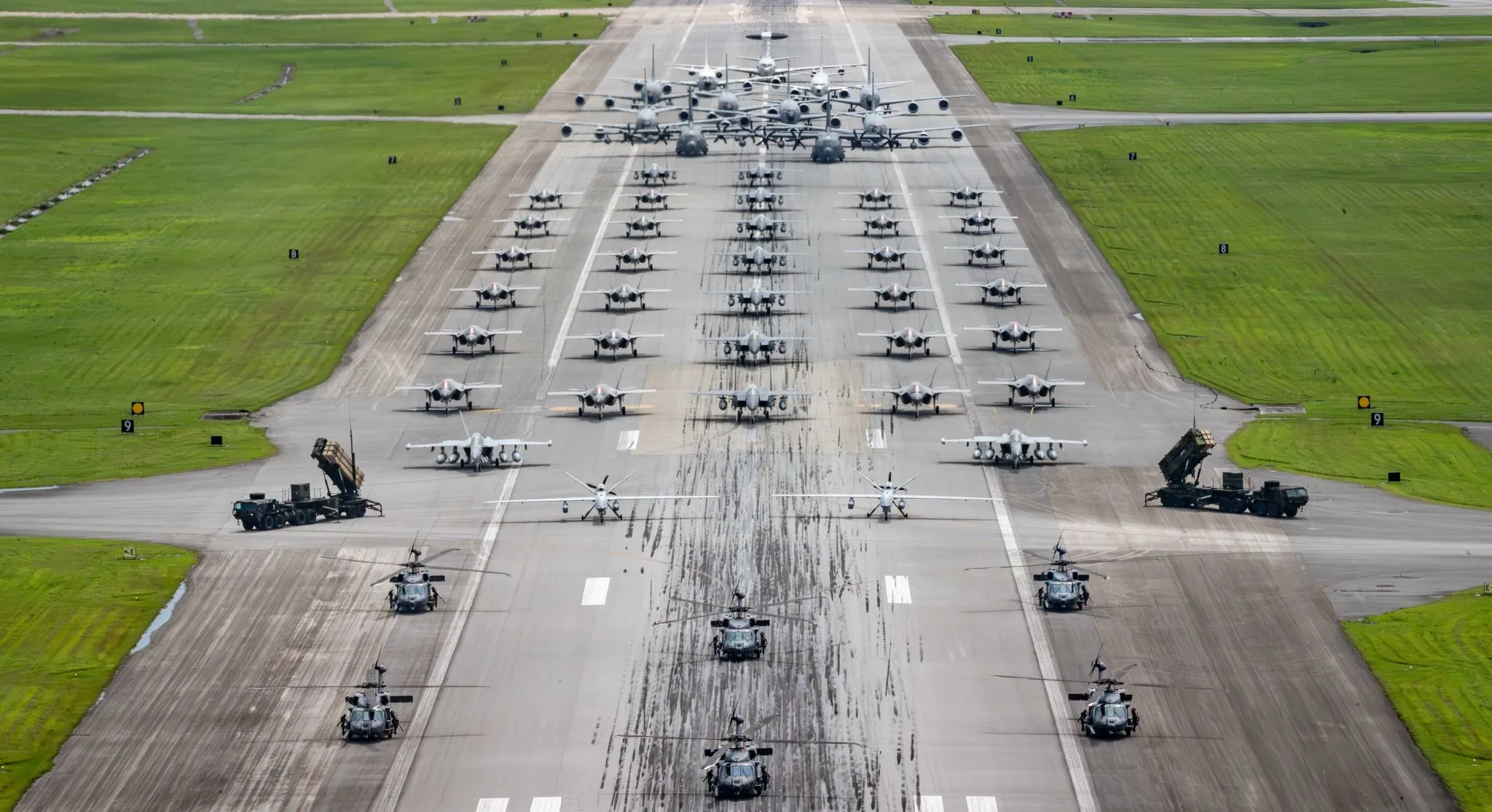Kadena Air Base: The Spectacle of Military Readiness
In a striking display of military might and readiness, Kadena Air Base in Okinawa, Japan, hosted one of the largest ‘elephant walks’ ever witnessed in the region. On the 25th of February, a staggering 53 aircraft participated in this breathtaking event, signaling a powerful message of deterrence and cooperation within the Indo-Pacific. The elephant walk, a coordinated movement of military aircraft that showcases a unit’s readiness to deploy, is more than just a visual spectacle; it represents strategic military posturing in an increasingly complex geopolitical climate.
The Significance of the Elephant Walk
Traditionally, an elephant walk serves a dual purpose: it helps pilots and ground crews hone their skills in fast-paced operational scenarios while simultaneously demonstrating the collective strength of the U.S. military forces. It is an event that draws attention and resonates deeply within both military and civilian communities, symbolizing preparedness against potential adversaries.
Lieutenant Colonel James “Jay” Phillips, the commander of the 18th Wing based at Kadena, remarked on the event: “This is about demonstrating our capability and our flexibility across the Indo-Pacific. We want our allies and our adversaries alike to understand that we maintain a strong forward presence here, and we are always ready to defend our interests.”
Comprehensive Involvement of Aircraft
Every aircraft involved in the elephant walk is pivotal to the U.S. Air Force’s capabilities in the Pacific Theater. From fighters to cargo planes, each model has its unique role, demonstrating the versatility and reach of U.S. military operations.
- F-15 Eagles: Known for their speed and agility, these fighter jets represent aerial superiority.
- F-16 Fighting Falcons: Multirole fighters capable of air-to-air combat and ground-attack missions.
- KC-135 Stratotankers: Essential for mid-air refueling, extending the range and endurance of fighter aircraft.
- C-130 Hercules: A tactical airlift aircraft, facilitating troop and cargo transport across the region.
A Show of Strength Against Geopolitical Tensions
As tensions in the Indo-Pacific continue to rise due to ongoing territorial disputes and military assertiveness from countries such as China and North Korea, the elephant walk at Kadena serves as a crucial signal of U.S. commitment to regional allies.
The U.S. maintains a network of bases in the Indo-Pacific, with Kadena Air Base being one of the largest and most strategically positioned. Its location allows for rapid deployment of forces across East Asia, underscoring the importance of U.S. military presence in a region often fraught with uncertainty and geopolitical challenges.
The Role of Joint Exercises
The February 25th event showcased not only American military might but also the cooperation with allied forces in the region. The collaborative efforts reinforce the operational readiness of U.S. forces while enhancing interoperability with partners such as Japan and Australia.
Major Yuki Takahashi of the Japan Air Self-Defense Force expressed the importance of these exercises: “Joint exercises enhance our capability to work together in real-time scenarios. When we unite our strengths, we make the region safer.”
The Event’s Background and Logistics
Planning an event of this scale requires extensive coordination between various squadrons and support staff. From pre-flight checks to ensuring that all aircraft are fully fueled and armed, the logistics involved in an elephant walk are no small feat.
In preparation for the event, aerospace ground equipment troops worked tirelessly to ensure that the aircraft were ready for the display. This included meticulously checking hydraulic systems, fueling apparatus, and all safety protocols to ensure a smooth operation.
The Human Element
While the aircraft garnered the most attention, the men and women behind the scenes played a crucial role in the execution of the elephant walk. For many, it represents the culmination of months—or even years—of preparation and training.
Airman First Class Linda Johnson shared her thoughts after the event: “Seeing all that power roll out in front of you is incredible. It’s a reminder of why we do this and what we’re trained for.”
Future Implications for the Indo-Pacific Region
As the elephant walk concluded, the implications of the display cannot be understated. The demonstration of air superiority not only reassures allies but also sends a crucial message to potential adversaries about the U.S.’s unwavering commitment to maintaining stability in the region.
While the international environment remains volatile, events like these are emblematic of the strategic counterbalance that the U.S. aims to provide. The large scale of the elephant walk suggests that Kadena Air Base will continue to play a key role in the U.S. military strategy moving forward.
Conclusion
In summary, the record-setting elephant walk at Kadena Air Base stands as a testament to the professionalism, readiness, and collaborative spirit of the U.S. military and its allies. In the face of evolving threats and challenges, such displays of unity and strength are more important than ever for maintaining peace and stability in the Indo-Pacific region.
With the JASDF and allied nations standing shoulder to shoulder, the message is clear: the U.S. is prepared to face any challenges ahead, ensuring security not only for American troops but also for the nations that share the values of freedom and democracy across the region.







